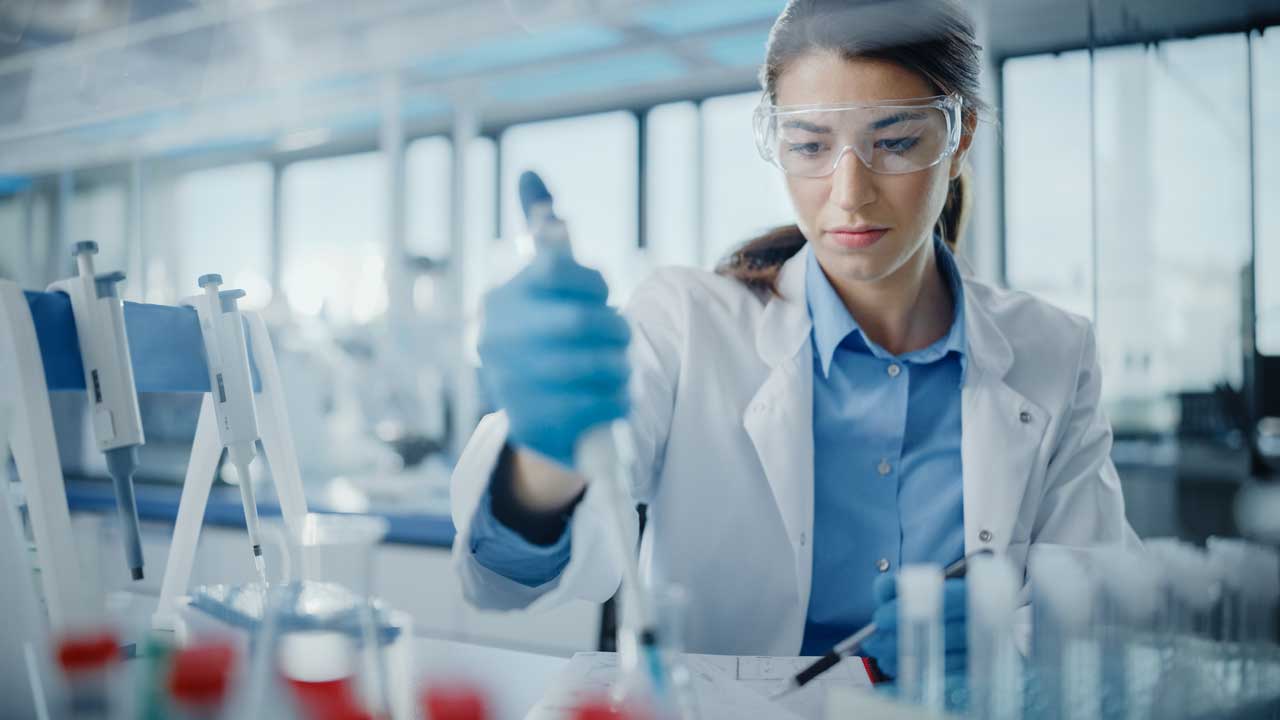
The holidays are upon us and with that comes the traditional holiday dinner. Here’s to molecules, compounds and Maillard reactions!
While most chefs are whipping up mashed potatoes or glazing a spiral ham, the chemist chef is busy determining which foods will yield the perfect reaction from friends and family. At Adesis, we are keenly aware of the fact that there’s a chemistry component to any dinner; being able to share the ‘why’ and ‘how’ is our holiday gift to you!
So, let’s get started.
From Experiments to Equipment
We never shy away from a little experimentation. For starters, to add a little chemistry flair into your cooking, it’s fun to conduct research into tryingsomething different. Perhaps you’ll discover new options to your tried-and-true menu.
Your basic ham or turkey will suffice, but why not try duck or veal this time (see our VP of Chemistry’s Veal and Peppers recipe at the end)? Just make sure your side vegetable of choice is the Brussel sprout. Why? Brussels sprouts contain compounds (sulforaphane, an isothiocyanate breakdown product of the glucosinolates) that have potential health benefits. “Research has focused on sulforaphane’s potential as a protector against neurodegenerative diseases, and whilst more research is still required, neuroprotective effects have been observed both in lab-cultured cells and within animals.”
Boiling Point: Potatoes
When picking a potato, whether it’s baked, mashed or boiled, there are a few interesting scientific facts to note:
Baked – The starch granules inside potatoes appear like smooth oval shells under a microscope. These ‘shells’ absorb moisture when the potato is baked; this in turn becomes steam that makes your baked potato fluffy inside. But, don’t forget to pierce your potato several times before baking or the pressure may cause your spud to explode during baking!
Boiled – When boiling potatoes, the same starch granules absorb both the internal moisture and some of the outside water it’s cooked in. To avoid gummy potatoes when it comes time to mash them, drain off the water well, return the potatoes to the pot and cover it with a lid to give any extra moisture a chance to evaporate.
Baking: The Essence of Protein Bonding
Baking is both a science and an art, and no time to test the accuracy of thermodynamics.
Flour contains two proteins: glutenin and gliadin. Adding water not only makes a dough but allows these proteins to bond and form the new protein gluten. Kneading intensifies the bond; putting it afterwards into a heated oven causes it to rise and grow its gluten ‘network.’ During the baking process, the network hardens to give the inside of your bread that great structure we all crave that holds up that slathering of melted butter.
When it comes to baking, your measurements and timing must be precise. When baking temperatures reach 300 ֠F (149 ֠C), sugar undergoes a Maillard Reaction (discovered in 1912, by French chemist Louis-Camille Maillard) – that is the chemical reaction of the reducing sugar with the amino acids and proteins. It’s what makes your cakes brown and your breads crusty – a very good thing!
Conclusion:
Never fear. If your new holiday dinner menu doesn’t yield the results you intended, you can always hide the failed product in the fruitcake.
Veal and Peppers (courtesy of Jack Chiarello, Adesis Vice President of Chemistry)
Ingredients:
- ¼ cup olive oil, plus 2 tbsp
- 3 lbs veal scallopini (cut into 2-inch cubes)
- 2 medium yellow onions; peeled, halved and thinly sliced
- 1 12 oz can tomato sauce
- 4 medium green bell peppers cut into 1½-inch pieces
- Salt, ground pepper, garlic powder to taste
Directions:
- Heat ¼ cup olive oil in Dutch oven
- Salt and pepper veal to taste. Sprinkle with garlic powder (optional)
- Brown veal in batches; about 5 -8 minutes per batch
- Drain liquid from pot
- Add 2 tbsp olive oil, reheat pot
- Add onion and cook till softened; about 8 minutes
- Return veal to pan; then add tomato sauce
- Add enough water to slightly cover the veal; bring to a boil
- Simmer for 3 hours partially covered
- Salt and pepper bell pepper pieces to taste. Add to veal mixture; simmering an additional 1 to 2 hours until peppers have softened and veal is tender
- Sauce should have thickened
- Serve with crusty Italian bread and enjoy!


